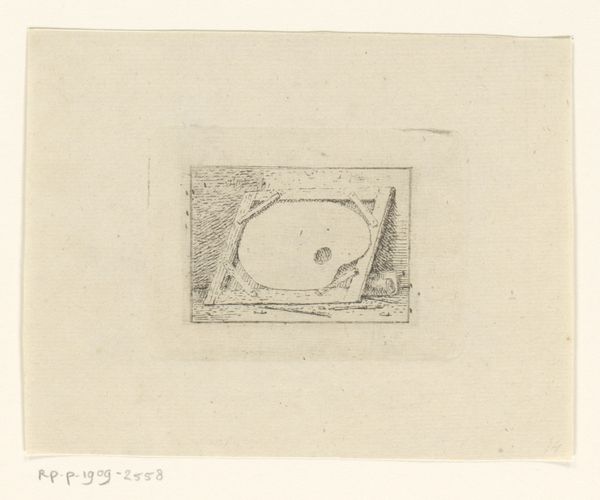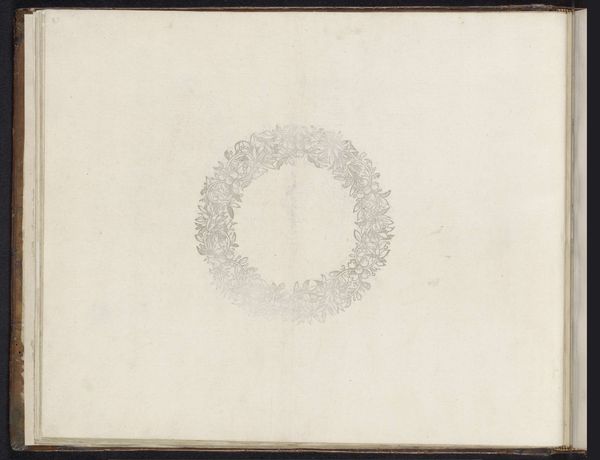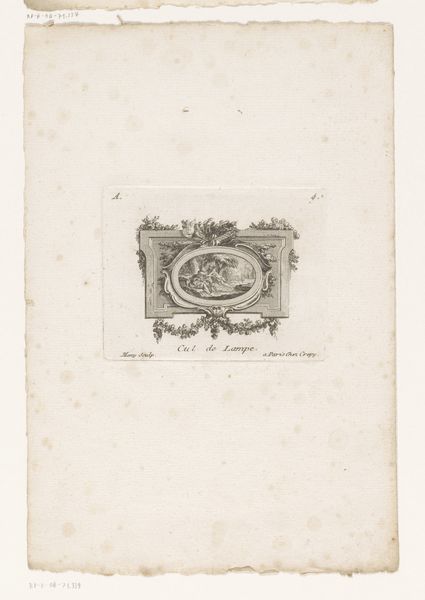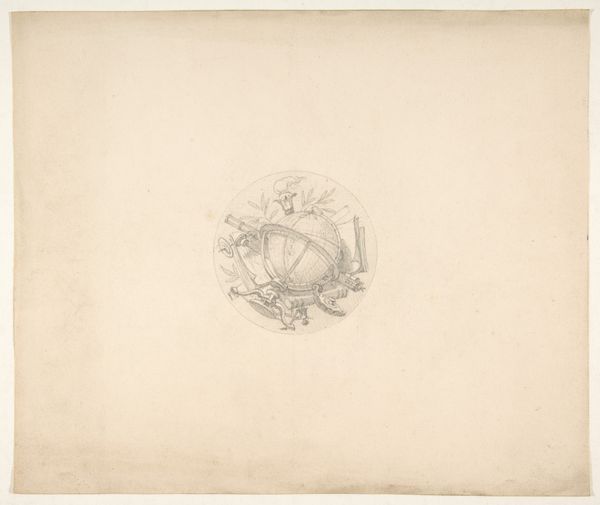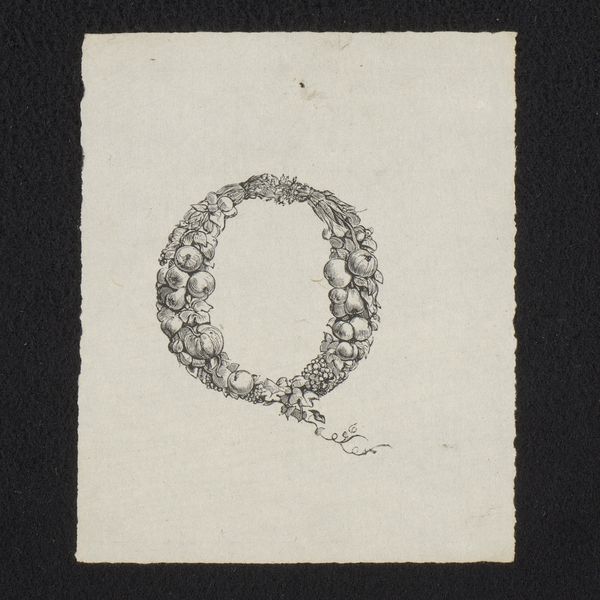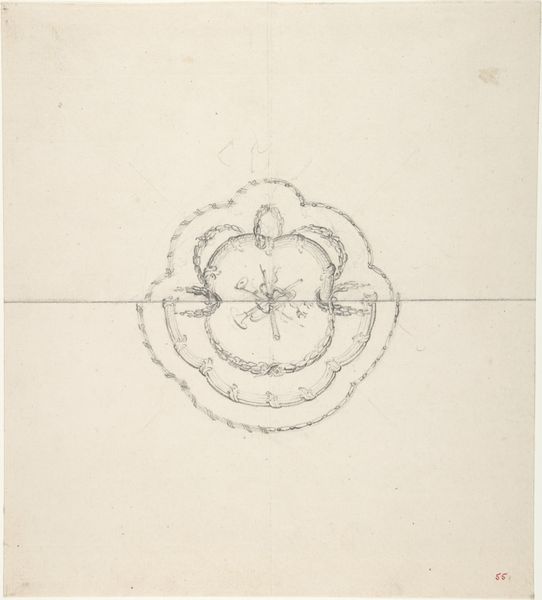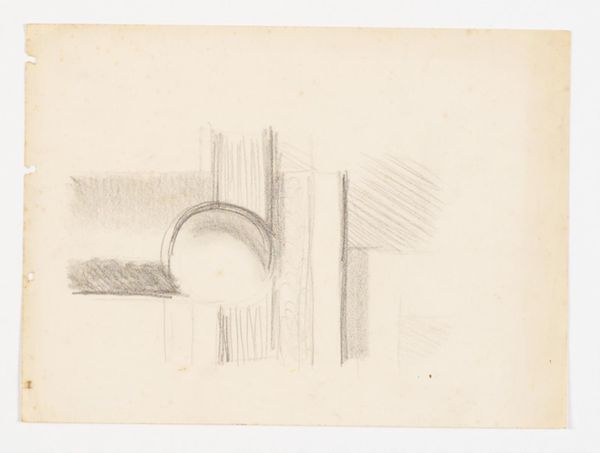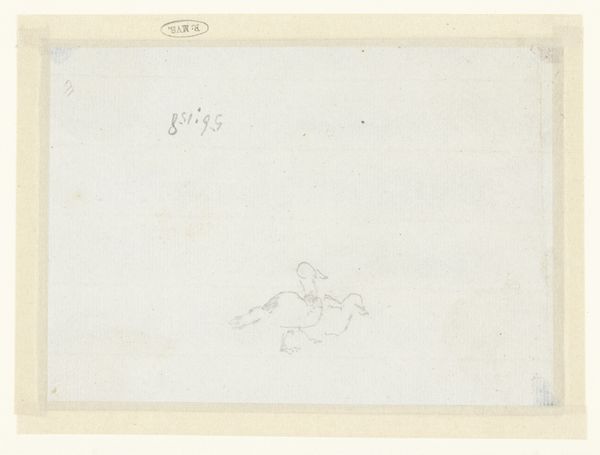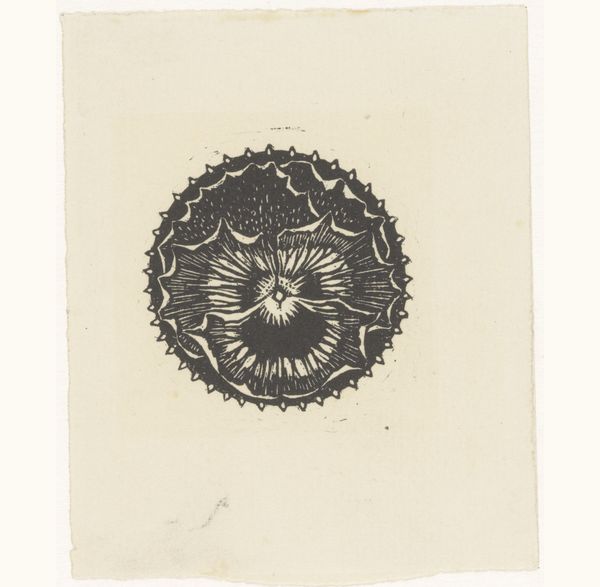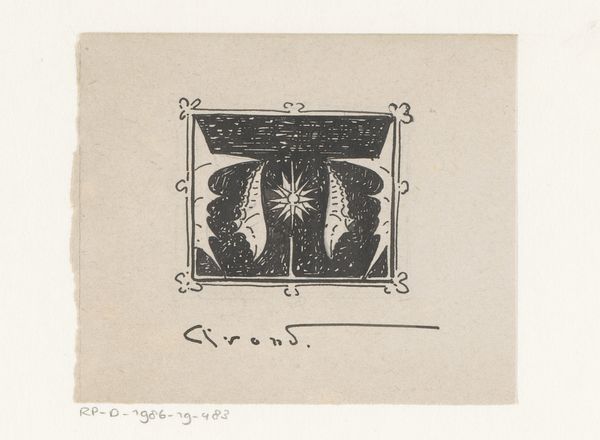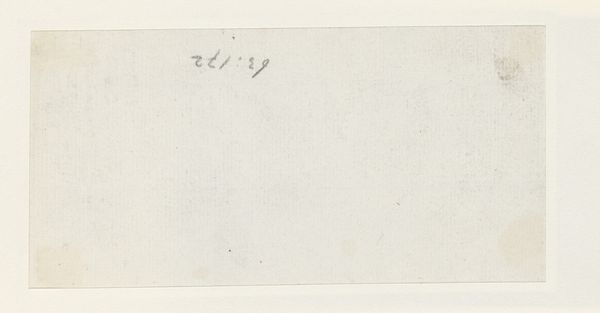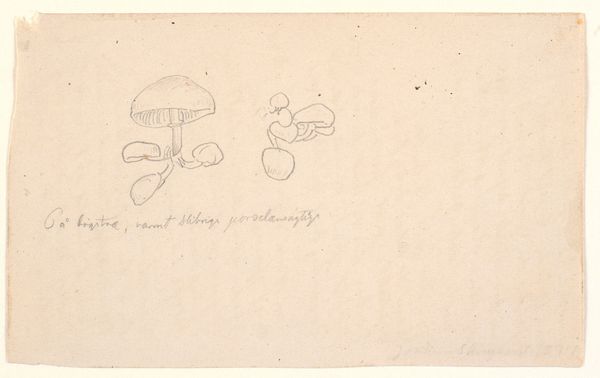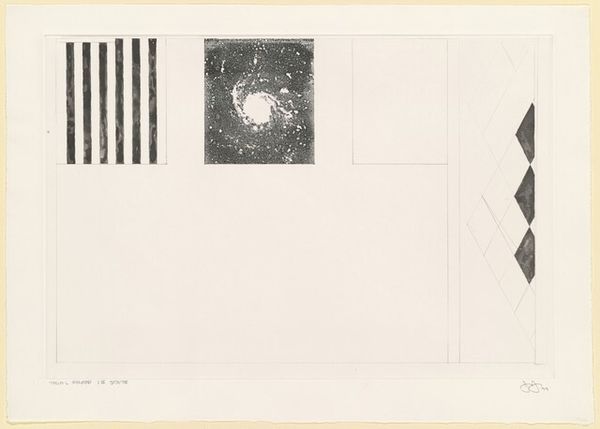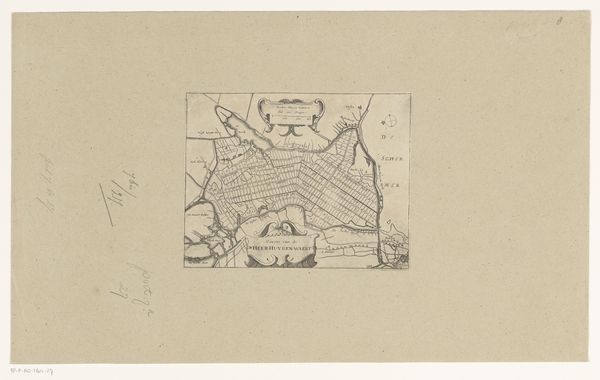
Dimensions: height 39 mm, width 58 mm
Copyright: Rijks Museum: Open Domain
This is Krans van laurier en mirte, made by Daniel Nikolaus Chodowiecki with etching. Look closely, and you will see that this is no mere botanical illustration. With the etching technique, lines are incised into a metal plate with acid, allowing for incredibly fine detail. The method is labor intensive, demanding precision. Yet the result is reproducible. Prints like this were made and sold in multiples, playing a key role in the development of visual culture as a commodity. Chodowiecki has used his skills to create a work that at first glance, seems simply decorative. But laurel and myrtle were commonly understood as symbols for success and glory. The wreath is therefore more than just a pretty picture; it’s an emblem, one which could be widely circulated and consumed. So, next time you see a print, remember to think about the social life of images, and the labor that goes into them. It’s not just about the finished product, but the entire process.
Comments
No comments
Be the first to comment and join the conversation on the ultimate creative platform.
